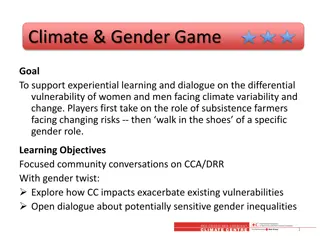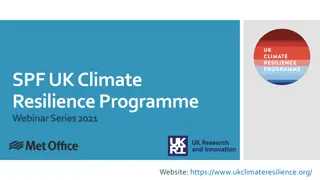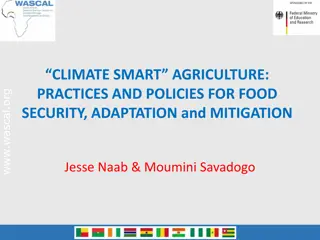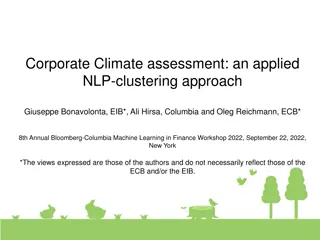Challenges Faced by American Pikas in a Changing Climate
The American Pika, a small mammal related to rabbits, is facing challenges due to climate change. Warmer temperatures are pushing their alpine habitat higher, leading to habitat loss and food scarcity. Declining populations, impact from predators, and mismatches in breeding and food availability are putting these creatures at risk.
Uploaded on Sep 25, 2024 | 0 Views
Download Presentation

Please find below an Image/Link to download the presentation.
The content on the website is provided AS IS for your information and personal use only. It may not be sold, licensed, or shared on other websites without obtaining consent from the author. Download presentation by click this link. If you encounter any issues during the download, it is possible that the publisher has removed the file from their server.
E N D
Presentation Transcript
American American Pika Pika The American Pika is a small mammal closely related to the rabbit. Pikas are cold temperature-dependant and thrive on rocky, alpine slopes of Mount Rainier. Pikas are known for building haystacks of grasses that are consumed during the winter months. They are known for their habit of whistling when strangers approach their territory.
Warmer temperatures cause the pikas alpine habitat to move to higher elevations because of forest encroachment. In some places, Pika have been reported to have moved as far as 2,000 feet higher than their historic habitat. Eventually, their Eventually, their habitat could be pushed off habitat could be pushed off the mountain or ridge top. Pikas cannot easily the mountain or ridge top. Pikas cannot easily migrate laterally in response to migrate laterally in response to climate changes changes as their thick fir does not dissipate as their thick fir does not dissipate heat, thus restricting their ability to cross heat, thus restricting their ability to cross lower lower- -elevation valleys to elevation valleys to reach more desirable alpine slopes. desirable alpine slopes. climate reach more
Longer frost free seasons allow for alpine fir displacement of wildflower and grass meadows which supply the pika with food. As meadows decrease there is less food for pikas and greater competition for fewer resources, leading to a decline in population and genetic diversity.
Declining Declining pika impact predators, such as hawks and impact predators, such as hawks and other raptors, which consume the other raptors, which consume the pika as part as part of their of their diet. diet. pika populations further populations further pika
Pika are not well-adapted to temperature increases. They must move to higher elevations because they can only leave their burrows to forage when the temperatures are cool enough. As temperatures increase, they can spend less and less of the day out of their burrow foraging and therefore are less able to store up reserves for the winter months. Since pikas do not hibernate, they are dependent upon the food that they store in the summer to feed them through the winter.
Warmer temperatures may also cause a miss-match between the timing of when the pikas breed in May and June and when the grasses that they consume are melted out of the snow. Less food availability stresses already waning pika populations.
S Some ome plant species, such as grasses, are dependent plant species, such as grasses, are dependent upon on animal transport and dispersal of seeds. upon on animal transport and dispersal of seeds. The The loss of loss of the seed dispersal that occurs as pikas the seed dispersal that occurs as pikas gather, pile and cure hay may result in slower or gather, pile and cure hay may result in slower or overall less plant overall less plant colonization of colonization of disturbed ground. ground. disturbed
Non Non- -native plant species are often more tolerant native plant species are often more tolerant of higher temperatures and changes in of higher temperatures and changes in precipitation than native precipitation than native species. When compete the native species it lessens the food and compete the native species it lessens the food and shelter available to animals such as shelter available to animals such as pika species. When they out they out- - pika. .

























